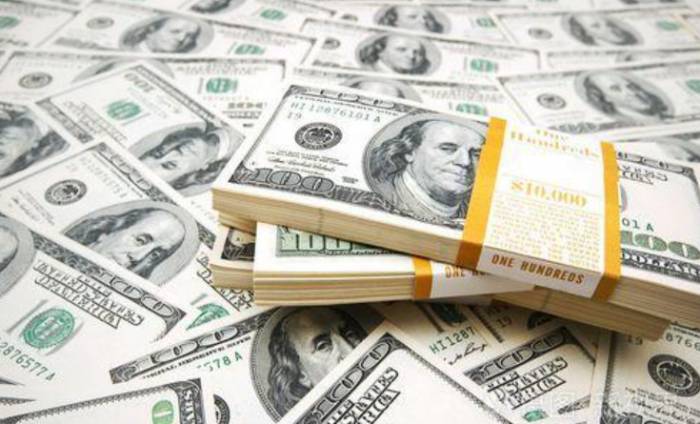Translation to English: The United States is repositioning! It will initiate a f
Unconsciously, it has been a year since the European conflict began.
During this year, the global economy has been greatly affected. Data from an official European agency indicates that the global economic loss from last year to this year will reach as high as 2.6 trillion US dollars.
The United States has initiated round after round of sanctions. Initially, everyone thought the target was only Russia, but now it has been discovered that the United States' target is countries around the world, with the main focus surprisingly being Europe.
Some time ago, the euro showed a clear rebound. To ensure its own interests, the United States has started new suppression against the euro.
In the currency war between the United States and Europe, who will be the ultimate winner?
01, Unexpectedly
According to data statistics from Western media, the country currently facing the most sanctions in the world is Russia. Up to now, there are as many as 14,000 sanctions against Russia, some of which were from previous years. However, the vast majority were after the outbreak of the conflict, amounting to 11,300.
But this fighting nation has shown an astonishing resilience.
Suppressing the exchange rate? Last year, not only did the Russian ruble not fall, it even rose, with an annual increase second only to the US dollar.
Suppressing the economy? In 2002, although Russia's GDP fell slightly, it eventually only fell by 2.1%, which surprised Western economists.Passing on inflation? Compared to Europe's inflation rate of over 10%, Russia has very well controlled inflation, with the annual price increase being less than 4%.
It is quite clear that if all of the United States' plans are targeted solely at Russia, then they will ultimately fail.
Believe that in this process, the United States has been continuously assessing, but has not changed at all, always persisting, and continuously escalating, does the United States not see that the economic consequences produced are completely not as expected?
There is only one answer, the United States' target has never been Russia from the beginning.
02, The true target
Who is the United States' target?
This weekend, a former U.S. Treasury Secretary publicly stated that sanctions should continue to be intensified on the basis of the existing ones, of course, Europe's energy crisis will continue to worsen as a result.
In fact, we can reverse the cause and effect of the above sentence, and this is the true purpose of the United States.
In order not to let Europe easily get rid of the energy crisis, sanctions should continue to be intensified. It is obvious that plunging Europe into a severe economic crisis is where the interests of the United States are maximized.
In fact, during this process, the U.S. dollar has been suppressing the euro. After the outbreak of the pandemic, the highest exchange rate of the euro against the U.S. dollar occurred at the end of 2020 to the beginning of 2021, when it was 1.235.In 2021, although there was a certain degree of decline, the drop was not significant.
The substantial devaluation of the euro exchange rate actually occurred after the outbreak of the conflict. At the beginning of 2022, the euro-to-US dollar exchange rate still reached 1.15, but after the conflict erupted, especially after round after round of sanctions, leading to Europe being deeply mired in an energy crisis, the euro's exchange rate fell to its lowest point of 0.9538 at the end of September last year.

On the one hand, the United States continuously raised interest rates, widening the interest rate differential with Europe, and on the other hand, it exploited the energy crisis to strike at Europe's economy, ultimately leading to the continuous devaluation of the euro.
03, Euro Counterattack
The devaluation of the euro is of great significance for the United States' financial harvesting.
Firstly, it will lead to a continuous outflow of funds from Europe to the United States.
Secondly, after the euro devalues, the prices of various assets are also equivalent to being greatly discounted, and the cost of the dollar when it starts to harvest and purchase is much lower.
Europe, of course, will not easily admit defeat, so starting in July last year, the European Central Bank also raised interest rates significantly to minimize the interest rate differential with the US dollar.
At the same time, European countries are striving to find alternative energy sources to minimize the harm of the energy crisis to the economy.
Finally, with continuous efforts, coupled with the fact that the US economy itself also began to encounter problems, the euro began to rebound strongly from October last year, and by early February of this year, the euro-to-US dollar exchange rate rebounded to a high of 1.1033.Europe can finally breathe a sigh of relief.
04, The Federal Reserve Shifts Course
However, the United States is not pleased.
Thus, since February of this year, under the United States' leadership, the price cap on Russia has been escalated, followed by the facilitation of the 10th round of sanctions.
At the same time, the Federal Reserve has made a significant shift in attitude, stating that there is a tendency for inflation in the United States to rebound, and substantial interest rate hikes are still needed.
In fact, these two tactics are identical to those of last year, but it is surprising that they remain effective.
Starting from February, the euro has once again faced tremendous pressure, falling to 1.055 in less than a month.
In this game of harvesting and counter-harvesting, it is still difficult to predict who will ultimately be the winner.
Post Comment